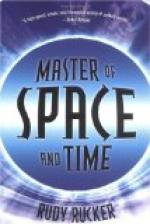We have noted that Morse suggested the possibility of uniting Europe and America by cable. The same thought had occurred to others, but the undertaking was so vast and the problems so little understood that for many years none were bold enough to undertake the project. A telegraph from New York to St. John’s, Newfoundland, was planned, however, which was to lessen the time of communication between the continents. News brought by boats from England could be landed at St. John’s and telegraphed to New York, thus saving two days. F.N. Gisborne secured the concession for such a line in 1852, and began the construction. Cables were required to connect Newfoundland with the continent, and to cross the Gulf of St. Lawrence, but the rest of the line was to be strung through the forests.
Before much had been accomplished, Gisborne had run out of funds, and work was suspended. In 1854 Gisborne met Cyrus West Field, of New York, a retired merchant of means. Field became interested in Gisborne’s project, and as he examined the globe in his library the thought occurred to him that the line to St. John’s was but a start on the way to England. The idea aroused his enthusiasm, and he determined to embark upon the gigantic enterprise. He knew nothing of telegraph cables or of the sea-bottom, and so sought expert information on the subject.
One important question was as to the condition of the sea-bottom on which the cable must rest. Lieutenant Berryman of the United States Navy had taken a series of soundings and stated that the sea-bottom between Newfoundland and Ireland was a comparatively level plateau covered with soft ooze, and at a depth of about two thousand fathoms. This seemed to the investigators to have been provided for the especial purpose of receiving a submarine cable, so admirably was it suited to this purpose. Morse was consulted, and assured Field that the project was entirely feasible, and that a submarine cable once laid between the continents could be operated successfully.
Field thereupon adopted the plans of Gisborne as the first step in the larger undertaking. In 1855 an attempt was made to lay a cable across the Gulf of St. Lawrence, but a storm arose, and the cable had to be cut to save the ship from which it was being laid. Another attempt was made the following summer with better equipment, and the cable was successfully completed. Other parts of the line had been finished, the telegraph now stretched a thousand miles toward England, and New York was connected with St. John’s.




